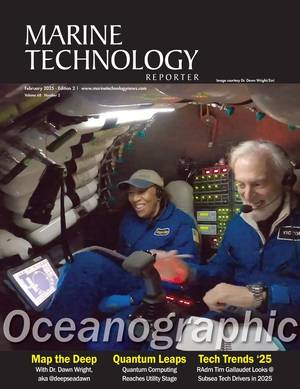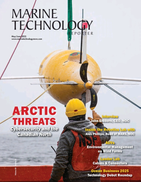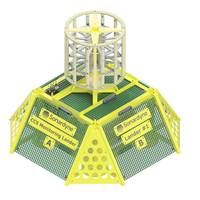
Sonardyne to Deliver Seabed Monitoring Kit for North Sea CCS Project
of the site will begin in the summer of 2026 to provide baseline data for a duration of two years before the transportation and storage of captured CO2 starts.The seabed landers will be equipped with Sonardyne’s Edge data processing application, power management and acoustic through-water communications to enable long-term, remote battery-operated deployment.Each lander will also contain a suite of hardware including Sonardyne’s Origin 600 ADCP, Wavefront’s passive sonar array and multiple third-party sensors. Together, this technology can detect small changes in water chemistry
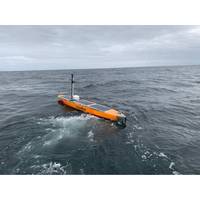
New Record Set in Unmanned Vessel Data Collection
in how oceanographic data is collected and reduces the reliance on ships for deep sea fieldwork.Professor Mark Inall, an oceanographer SAMS, said: “This is an incredible achievement by the team at SAMS and our partners at AutoNaut and Sonardyne. We believe it is the first example of through-water communications of ocean climate research data to an autonomous vehicle and instant transmission of data to shore. “It has never been more important to have accurate and up-to-date measurements about what is happening in our ocean, which is undergoing major and rapid changes in the face of climate
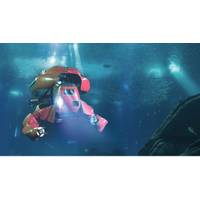
Subsea Robotics: Aquanauts, Hydronauts, Roll Out
communications – terrestrial and underwater – to support the ability to operate without an umbilical. While satellite communications are there, the rollout of the likes of Starlink will provide more inexpensive ways to transmit more data to the surface, says Radford. For through-water communications, Nauticus has been working with Schlumberger, from whom Nauticus has licensed use of an underwater modem previously tested from a DriX USV to receive video from an AUV. It’s also been work with Singapore-based Subnero.Subnero has been developing software defined underwater acoustic modems
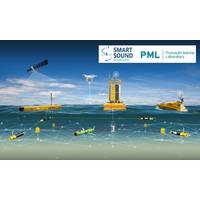
Fleet of Ocean Robots, Buoys, Set for Deployment Off Plymouth
it has also procured four autonomous underwater robots from ecoSUB robotics, with funding from NERC."Their sophisticated sensors are designed to provide crucial scientific data and the flotilla of new generation subs, the largest in the UK, is uniquely integrated together using acoustic underwater communications. This means the subs will be able to perform multi-vehicle synchronized surveys with accurate underwater positioning and can communicate with the PML Pioneer," PML added."Plymouth’s new fleet is unique in its field thanks to ‘Smart Sound Connect’, a £1.8M

One-on-One with Martin McDonald, SVP, ROV Division, Oceaneering
so it may not be suitable in certain benign locations. It’s possible to access power on selective existing subsea production systems, and we are working with customers to explore opportunities for deployment.What other developments are most crucial to subsea residency?Advancements in through-water communications is crucial. If that technology can be perfected, then it opens up another and more direct method of communicating with the subsea vehicle. For example, today, AUVs have to recalibrate and verify their positions. If we can do that subsea and also on the move, then that extends the duration
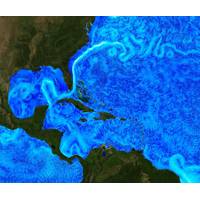
Researchers to Monitor Disruptive US Gulf Current
historic water profile data can be used to calculate currents throughout the full water column.A total of 25 of Sonardyne’s and URI’s own PIES and current meters will be deployed this summer, in waters down to 3,500 meters depth, with an initial data retrieval using acoustic through-water communications to a surface vessel planned for autumn 2019. Instrument recovery is scheduled for autumn 2020. The results of this study will be used to inform how best to deploy a larger array for a planned 10-year-long research campaign.URI GSO Program Director, Professor Kathleen Donohue, said, &ldquo
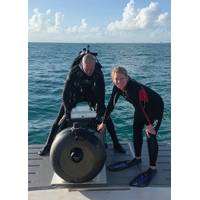
Subsea: The Future of Unmanned Vehicles
;s AUV market according to Graham Lester, Senior Vice President, Sales & Marketing, Hydroid. “Customers are looking for improved energy sources to allow for greater endurance and larger payload sensors. Additionally, they are looking for improved underwater positioning and through-water communications. The desire is to move toward providing a sustained presence where we can, not only, sense the environment but can affect it and react to it.”Lester has more than 30 years of experience with military, oceanographic, offshore and hydrographic equipment, including a detailed understanding
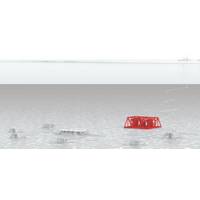
Powering the Seafloor: Put a Socket in It
and predictive maintenance.The shape of the communications and computing architecture – i.e. centralized or decentralized (using edge computing) – is still a debate. But, the bottom line is that there’s more information and more control and to this framework subsea through water communications can be added, so that vehicles can talk to the infrastructure and each other, without having to physically connect.This all enables a more flexible system. “Moving to all-electric is like starting with a clean sheet of paper,” says Strand. “Today, electric solutions that
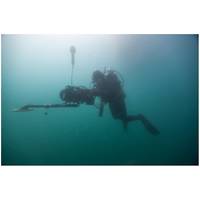
Metal Detector Added to Underwater Diver System
configured for mission specific operations from search and recovery to ship hull inspections to mine-countermeasures and more. Additional options include proton magnetometer, HD camera, underwater head-mounted display, selection of long and short range sonar heads, radiation detector, through water communications and various positioning systems dependent on the accuracy required. The Navigator may also be integrated with Shark Marine’s MAKO, diver delivery system to give it autonomous operation capabilities. Shark Marine’s Divelog Control software is the program that ties
 February 2025
February 2025
